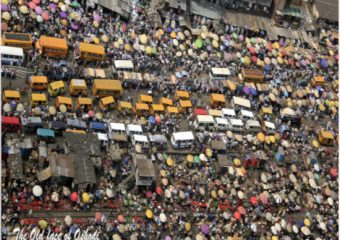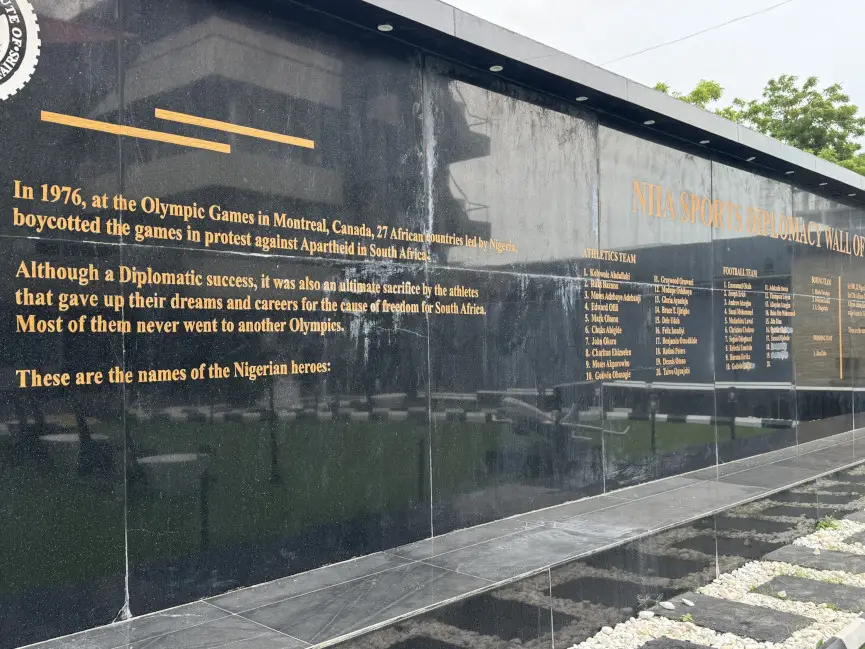Preamble
This week President Muhammad Buhari, opened the new Oshodi Transport Terminal, described by some people as an architectural masterpiece. This may not be directly related to sports, but I have since realized that all of life is, indeed, connected to sport and therefore, I look at life through the prism of sport. A few years ago, I was in Kenya during the design of the urban renewal project of the Kenyan city of Mombasa. Sports consultants were actively involved in the city’s new design, incorporating sports and recreational facilities into site designs all over the city that would physically engage most citizens during their daily activities, making them healthier and to live longer through ‘active transport’, a scientific measure of the distance a person covers on a daily basis doing physical activity. So, permit me today to reproduce an article I wrote and published almost 17 years ago, about an area in Lagos that had just fulfilled a vision I had that now finds fulfilment of some sort this past week, thanks to the visionary work of Lagos State governors, Tunde Fashola, that started the project, and Akinwunmi Ambode, that completed it. Please enjoy a slightly edited version of the article in The Punch of August 22, 2002.
Oshodi – A slum, a tourist attraction
Have you ever stopped at the top of the overhead bridge at Oshodi in Lagos? Some years ago, I was working on a film project with Rod Hay, an Australian film producer on a documentary on football in the city of Lagos when I had an incredible insight into the other side of Oshodi. Rod Hay had come to Lagos with a crew that included a sound recordist from South Africa and a cameraman from New Zealand. I had hired a helicopter for the team to take pictures of the city from the sky. It was a truly revealing experience.
Some of the pictures we shot from above Lagos included sprawling Ajegunle, the wood bridge beside the Third Mainland Bridge, the National Stadium and the National Theatre environment, the abandoned Teslim Balogun Stadium looking like the ruins of an Amphitheatre in Ancient Rome, the reclaimed lands around the Lekki peninsular and Oshodi. Oshodi held the greatest fascination.
During the day Oshodi offers a view from the sky that is simply indescribable. Shut your mind to the usual mayhem that you are familiar with. Climb to the top of the overhead bridge, and take a look left and right of the bridge.
You can be immediately repulsed by what assaults your eyes, but be ready also for another experience. Look closer, look beyond the chaos and confusion, beyond the dirt and disorder. Choose to see Oshodi with an eye of an adventurer, an artist, a tourist seeking unusual sights, and a thousand unique scenes will start to unfold before you. This is what my foreign friends saw that day from the sky.
Scene One – the market on the rail tracks.
There is a rail track and a train that runs on it twice a day. The relationship between the track, the train and Oshodi is a life drama.
A sprawling market of traders, an endless sea of heads, of buyers and sellers of everything from a salve to a star, in every direction as far as the eye can see. A loud distinguishing blaring horn indicates the approach of a train, but there is no train or rail line in view, anywhere.
The market, a sea of wheelers and dealers below you, suddenly vomits a passage. There is a scramble in the mass of people below as several gather on either side of the passage that suddenly reveals two tracks. The people then stand in a line on either side of the tracks carrying their wares in their hands, or on their heads, as in salute to an old train moving slowly, growling, puffing and heaving past its subjects in majestic grandeur.
Within seconds, the market swallows up the tracks again as the people move back their wares onto the disappearing tracks, and life resumes with the train continuing on to its destination, a scene reminiscent of the biblical parting of the red sea. It is simply magical.
Scene Two: Top of the bridge itself.
Here is a human cauldron. People can be counted milling around in their thousands. There are thieves and pickpockets, bus conductors, traffic and security agents, motor and garage touts, local government and market officials, officers and men of the National Road Transport Workers Union, commuters, idlers, trekkers, young boys and girls dashing between moving cars selling their wares, Okadamotorcycle riders carrying two, sometimes three, passengers, and a crawling chain of bruised and battered moluebuses, most bellowing smoke, or noise, or both! It is the ultimate human melting pot. This rowdiest of sights holds a fascination in its rich kaleidoscope of colours, sights and sounds. My foreign friends were hooked.
It is not the end. There is still nightfall.
At night, Oshodi undergoes a total magical transformation. It’s notoriety as one of the most dangerous places in Nigeria takes nothing away from the incredible scenes at night. For years, I had been going past Oshodi on my way home every day and never realized that it had more to offer than the dangerous image that a mere mention of it usually conjures. My guests wanted to see from close up some of what they had seen earlier during the day from the sky. One of them who had earlier complained about the filth, noise and pollution of Lagos, now desperately wanted to record the awesome sight before us. The cameramen from New Zealand, banishing all fear, took out his camera and started to shoot the night scene. Soon, we were documenting unique sights and sounds that could not be found anywhere else in the world.
On both sides of the bridge along Agege Motor road at night it is always dark. There are no streetlights. Thousands of flickering lights from oil lamps in the sprawling night market light up the night. Against the light from these lamps are the glittering reflections of people’s eyes like millions of stars. Vehicles are captured in silhouettes, shadows formed by preceding headlamps of other vehicles producing a sensation of dancing shadows in this chaotic labyrinth. The traffic is bumper to bumper, hardly any spaces between the vehicles. The noises become melodic sounds of hooting buses, haggling traders, thousands of human feet, and conductors calling their passengers.
Left and right of the bridge, for as far as the eyes can see, is another endless stream of dancing and moving lights and silhouettes of more people and cars against a pitch dark background. Picasso would have come to Oshodi and found enough artistic material to last him a lifetime of creative work. What an incredible sight to behold the darkness, and to also behold the beauty it throws up!
My friends were mesmerised by the sights and sounds of Oshodi. None of them had seen or experienced anything quite like Oshodi in their lives, they confessed to me later. I started to see i the potentials of turning this unique place and experience into a tourist destination. I bet people will come from all over the world to experience it. Since then, every time I want to remind myself about how to look at Nigeria with some hope, to look beyond the disorder and the ugliness, and to think of the opportunities the country provides, I go back to the pictures we took that day of Oshodi and see an incomparable asset. It may be one of Nigeria’s slum areas, but it has the potential of also becoming one of Nigeria’s greatest tourist attractions.










Latest Comments